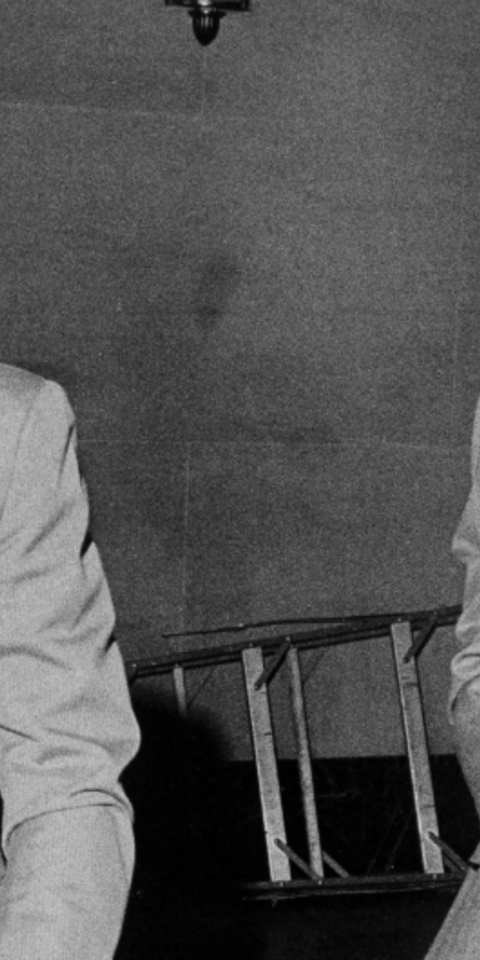One of the more difficult concepts for older journalists to adapt to during the transition from print to digital was the concept of SEO (search engine optimization) in headline writing to attract more eyeballs.
Consider the difference between this sedate New York Times head from 2011: Mark Gerard, Veterinarian at Center of a Horse Race Fraud, Dies at 76, and a look back at the same story by Vice: The Sport of Kings Is Full of Scum, which takes full advantage of the fact that a dead person can’t sue you for libel.
Who Is Mark Gerard?
Mark Gerard was born in Brooklyn, and for his tenth birthday in 1944 his sister got him a retired polo pony as a gift. You’ve got to think that Brooklyn kids getting ponies as birthday presents from their sister during the war was quite rare.
That horse, called Velvet, accompanied Gerard upstate when he went to study veterinary medicine at Cornell, where he became captain of the polo team. His job in the summer was to work as an exercise rider and hot walker at tracks in New York.
After graduation he became a vet for racehorses like as Canonero II, which won the Kentucky Derby and the Preakness in 1971, and then for the greatest of them all, Secretariat, which is an excellent thing to have on your resume.
Cinzano & Lebon
But in 1977, Gerard was the principal figure in a horse switching scandal. In May, he flew to Uruguay on behalf of horseman Joseph Taub, later to become the owner of the New Jersey Nets.
In Uruguay, Gerard purchased a champion horse called Cinzano for $81,000, at the same time paying $1,600 for another animal, the lowly Lebon, who had won just one race in the previous two years and got nervous if he saw a glue bottle.
The two very similar looking horses were flown to the U.S., accompanied by diagrams so they could be identified when arriving at JFK airport.
Lebón was listed as a bay 5-year-old with a white star on his face and Cinzano a bay 4-year-old with a white star on his face and an easy-to-miss inch-long scar on his left shoulder. Cinzano's star, as the newspaper El Pais was to note, was longer, lower and more irregular in shape than Lebón's, says an article in the SI Vault.
Blood samples were taken to make sure the horses were not suffering from contagious diseases, and the horses were placed in a Lufthansa holding pen as they waited to be shipped to the USDA quarantine station in Clifton, N.J. Lebón and Cinzano were cleared by USDA chemists, and on June 11 were vanned to Gerard's Muttontown, L.I. home. The next evening Cinzano is said to have suffered a fractured skull and broken ankle at Gerard's farm.
What rotten luck.
Fraud & Deception
Gerard filed an insurance claim for the horse and Taub, who was not implicated in the scheme, was paid $150,000.
A few months later, on the grass at Belmont Park:
Lebón, the long shot at 57 to 1, is leading easily by two lengths…through the stretch Lebón increases his lead and wins by four lengths without being menaced. When the lights flash on the infield tote board, they show a $2 win bet on Lebón is worth $116, the biggest payoff in New York in months.
While bettors are reading their Racing Form, learning that Lebón’s races in Uruguay were sprints on the dirt, making a win at Belmont on grass over a mile and a quarter, shall we say, eyebrow-raising, who should step up to the cashier’s window but Mark Gerard!
Fortuitously, he had put down $1,300 to win and $600 to show on Lebón, collecting just over $80,000, a bit less than $422,000 in 2024 bucks.
But, too bad for Gerard, journalism happened.
Uncovering The Dirt
The horse racing editor at El Pais, a newspaper in Montevideo, Uruguay was excited to learn that Lebon had gotten so much faster since moving to the States, and put in a request to the Associated Press for a winner’s circle photograph.
Right away, that editor told the New York Jockey Club that horse was Cinzano. A subsequent dental examination showed that not only had Lebon gotten faster, he was also now a year younger than when he left home.
The real Lebon, venerable sports columnist Red Smith later wrote in The New York Times, “couldn’t beat a fat man from Gimbels to Macy’s.”
With F. Lee Bailey (later part of OJ Simpson’s defence team) representing him, Gerard was acquitted of two felony charges, but found guilty of “fraudulent entries and practices in contests of speed,” a misdemeanor.
His original sentence of a year in jail and a fine of $1,000 was reduced on appeal, but he served time in jail in Nassau County.
The Lebon-Cinzano affair was a staple of New York sports pages for months.
At the time of the Lebon scandal, 400 horses at Belmont and at Aqueduct were under the care of Gerard and his assistant. With his racetrack career in shambles, Gerard moved to Florida, settling near Palm Beach, where he developed a successful practice looking after polo ponies.
By the time investigators looked into the reported death of Cinzano that led to the big insurance payoff, they were told the body had been thrown into the town dump in Huntington, NY for a fee of $5 and was now buried under 60,000 tons of garbage.




